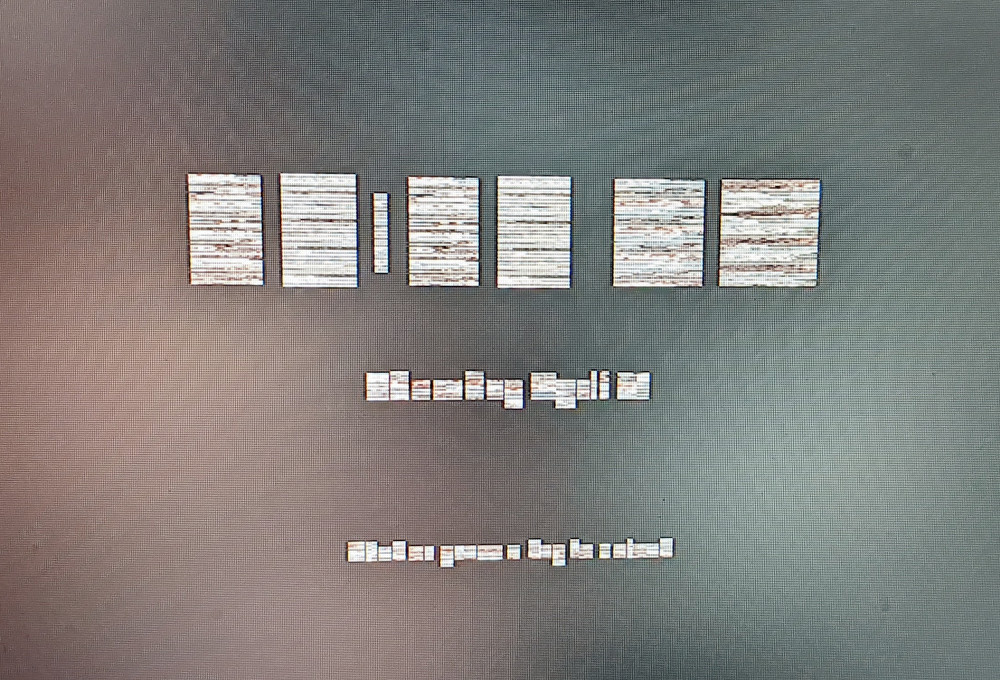Always nice to be greeted by this unlock screen:

Ever since upgrading to the latest NVIDIA driver, my Linux system has had a weird quirk with resuming from suspend/hibernate. All the applications and services that were running pick up right where I left them, but anything drawn by Gnome shell — including the unlock screen, the top bar and the dock — has corrupted text and icons. Sometimes it’ll be missing every few letters (Firefox is often captioned “ire ox”). And sometimes all the letters and icons will just show static.
It clears up if I log out and back in, or reset the display with Ctrl+Alt+Backspace. And I recently learned about another useful shortcut for Gnome: Typing “r” in the Alt-F2 “Run Command” box (whether I can read it or not!) will reset Gnome Shell without closing the session, so I can keep all the applications running and actually use suspend for what it’s meant to do — though with an extra step.
Update July 10: The latest driver (515.57) appears to fix it!